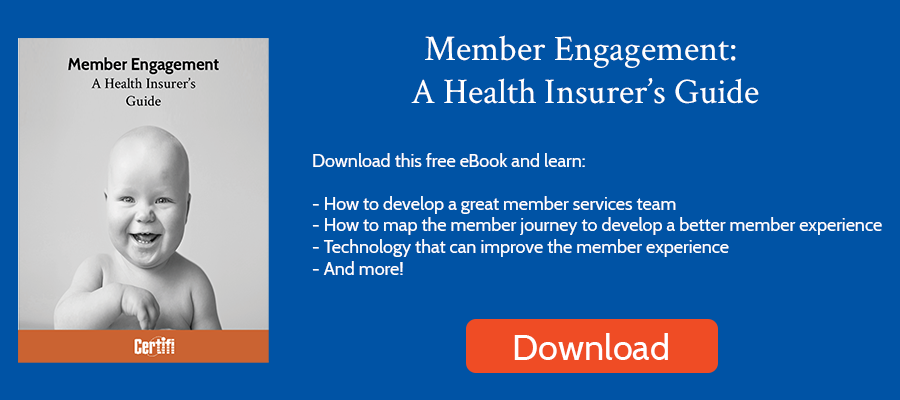Every health plan sends them: Boring, black-and-white transactional direct mail communications to members. Transactional direct mail includes welcome letters, explanations of benefits, monthly invoices, or ID cards. Unfortunately, many health plans send these member communications as they have for decades. As a result, this direct mail becomes a cost instead of a revenue generator. But they don’t have to be. Here are five ways health plans can engage members with direct mail and impact the bottom line:
Set a Goal
If you want to turn boring transactional direct mail into a measurable revenue generator, the first step is to identify a goal. For example, say you are sending new ID cards. Set a goal to have a 10% increase in portal registrations from the previous year.
Why? Setting that goal helps you determine steps you can take toward that goal. You may include a sticker on the card to remind members to register. Or, insert a page about the benefits of your member portal.
Setting a goal helps prioritize the information included in your transactional direct mail. But more importantly, it quantifies the results of your direct mail campaign. More on that later.
Understand Your Target Audience
Any good marketer knows understanding your target audience is the key to success. Your transactional direct mail communications are no different. If you can segment by specific populations, you can create distinct goals and more significantly impact revenue.
For example, your goal for your welcome letter to a Medicare Advantage population will likely be different than a welcome letter to an on-exchange enrollee. And the tactics you use to achieve your goal may also differ. Make an effort to understand your target audience, evaluate their needs and create communications that help them – and you – achieve their goals.
Personalize Where Possible
Segmenting by the target audience helps, but personalizing to the individual will pay great dividends.
Explanations of Benefits (EOB) are a prime example. For most members, the EOB is confusing and, frankly, not very helpful. But it’s a unique opportunity to personalize the member communication.
For example, many insurers have unique member intervention programs. Because EOBs relate to what healthcare members have received, it’s easier to identify which personalized interactions – like your diabetes management program – are a good fit.
How do you do it? Align specific treatments with specific intervention programs and include information about those programs in your EOB communications.
Optimize for Impact
Health plan transactional communications are known for being bland. Examine the examples we’ve listed above – EOBs, invoices, and welcome letters. Health plans typically create very non-descript communications of this type.
But they don’t have to be. You can optimize those communications so that members take the actions you want them to take using direct mail techniques:
- Use color to highlight actionable items. Whether it’s text or the steps to take to complete an action, using color to guide members can impact results.
- Use a Johnson box. You’ve probably seen information near the top right of direct mail marketing. Those are called Johnson Boxes and attract your attention and induce you to understand the key message. Like a newspaper headline, the goal is to get you to read what follows.
- Leverage the Zeigarnik effect. The Zeignarik Effect states that people recall incomplete tasks more than completed ones. In direct mail terms, you might see the letter use incomplete sentences that encourage you to read further. Or marketers often create graphics that demonstrate how a step-by-step process is unfinished. For example, if you’re sending a welcome letter, you may show a two-step process that displays a checked box for enrollment and an unchecked box for member portal registration. That encourages members to register more than words to that effect.
- Take advantage of the narrative bias. Humans like stories. Leverage them in your transactional direct mail to engage members and get them to act.
Measure and Improve
Finally, measure your results. Some questions you can ask:
- Did you achieve your goal?
- Why or why not?
- What can you test in your next send?
- What feedback did members provide?
- Was your goal a match for the direct mail piece?
Align your goal with revenue. Imagine you decided to optimize your EOBs to increase diabetes management program usage. What’s the dollar value associated with each additional member in the program? It’s great to explain that “we experienced a 3% increase in member usage,” but even better to relate “that 3% increase translates to over $500,000 in reduced claim costs.” You likely have data that can tell you the revenue impact of your goals. Include that in any analysis so the business knows the effect.
Certifi’s health insurance premium billing and payment solutions help healthcare payers improve member satisfaction while reducing administrative costs.



